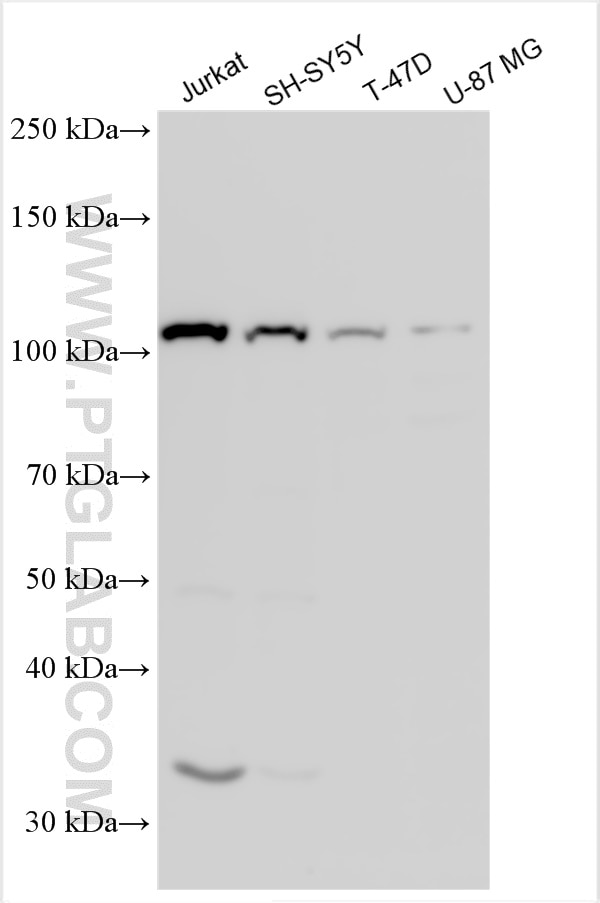PCDHGB7 Polyklonaler Antikörper
PCDHGB7 Polyklonal Antikörper für WB, ELISA
Wirt / Isotyp
Kaninchen / IgG
Getestete Reaktivität
human
Anwendung
WB, ELISA
Konjugation
Unkonjugiert
Kat-Nr. : 30040-1-AP
Synonyme
Geprüfte Anwendungen
| Erfolgreiche Detektion in WB | Jurkat-Zellen, SH-SY5Y-Zellen, T-47D-Zellen, U-87 MG-Zellen |
Empfohlene Verdünnung
| Anwendung | Verdünnung |
|---|---|
| Western Blot (WB) | WB : 1:1000-1:4000 |
| It is recommended that this reagent should be titrated in each testing system to obtain optimal results. | |
| Sample-dependent, check data in validation data gallery | |
Produktinformation
30040-1-AP bindet in WB, ELISA PCDHGB7 und zeigt Reaktivität mit human
| Getestete Reaktivität | human |
| Wirt / Isotyp | Kaninchen / IgG |
| Klonalität | Polyklonal |
| Typ | Antikörper |
| Immunogen | PCDHGB7 fusion protein Ag32511 |
| Vollständiger Name | protocadherin gamma subfamily B, 7 |
| Beobachtetes Molekulargewicht | 105 kDa |
| GenBank-Zugangsnummer | BC051788 |
| Gene symbol | PCDHGB7 |
| Gene ID (NCBI) | 56099 |
| Konjugation | Unkonjugiert |
| Form | Liquid |
| Reinigungsmethode | Antigen-Affinitätsreinigung |
| Lagerungspuffer | PBS with 0.02% sodium azide and 50% glycerol |
| Lagerungsbedingungen | Bei -20°C lagern. Nach dem Versand ein Jahr lang stabil Aliquotieren ist bei -20oC Lagerung nicht notwendig. 20ul Größen enthalten 0,1% BSA. |
Hintergrundinformationen
PCDHGB7 is a member of the protocadherins, which have been demonstrated to inhibit tumorigenesis and cancer progression by inducing cell cycle arrest and apoptosis. Previous studies confirmed that PCDHGB7 plays roles in the process of self-recognition and mutual recognition between synapses, the movement of synapses, and the establishment of the nervous system network (PMID: 17936607). In humans, PCDHGB7 is predominantly expressed in the brain, spleen, heart, endometrium, esophagus, gall bladder, urinary bladder, and prostate (PMID: 31379979).
Protokolle
| PRODUKTSPEZIFISCHE PROTOKOLLE | |
|---|---|
| WB protocol for PCDHGB7 antibody 30040-1-AP | Protokoll herunterladen |
| STANDARD-PROTOKOLLE | |
|---|---|
| Klicken Sie hier, um unsere Standardprotokolle anzuzeigen |


